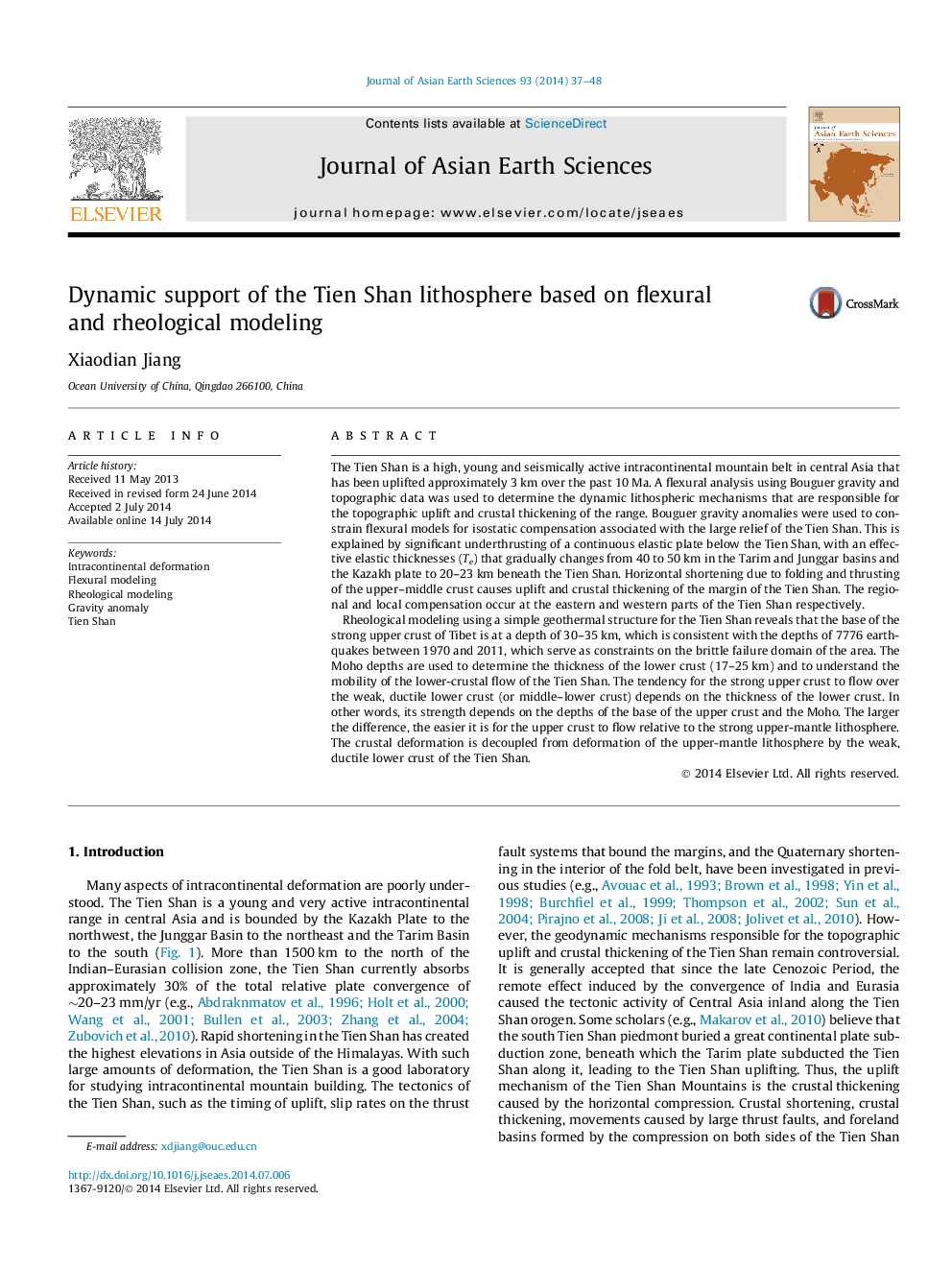| کد مقاله | کد نشریه | سال انتشار | مقاله انگلیسی | نسخه تمام متن |
|---|---|---|---|---|
| 4730719 | 1640375 | 2014 | 12 صفحه PDF | دانلود رایگان |
• The 2D and 3D flexural modeling are firstly used for the Tien Shan and its adjacent area.
• The modeling reveals that the depth consistency serves as constrains on the brittle failure domain of the area.
• Our results of Fig. 3, Fig. 4, Fig. 5, Fig. 6, Fig. 7, Fig. 8, Fig. 9 and Fig. 10 are never published.
The Tien Shan is a high, young and seismically active intracontinental mountain belt in central Asia that has been uplifted approximately 3 km over the past 10 Ma. A flexural analysis using Bouguer gravity and topographic data was used to determine the dynamic lithospheric mechanisms that are responsible for the topographic uplift and crustal thickening of the range. Bouguer gravity anomalies were used to constrain flexural models for isostatic compensation associated with the large relief of the Tien Shan. This is explained by significant underthrusting of a continuous elastic plate below the Tien Shan, with an effective elastic thicknesses (Te) that gradually changes from 40 to 50 km in the Tarim and Junggar basins and the Kazakh plate to 20–23 km beneath the Tien Shan. Horizontal shortening due to folding and thrusting of the upper–middle crust causes uplift and crustal thickening of the margin of the Tien Shan. The regional and local compensation occur at the eastern and western parts of the Tien Shan respectively.Rheological modeling using a simple geothermal structure for the Tien Shan reveals that the base of the strong upper crust of Tibet is at a depth of 30–35 km, which is consistent with the depths of 7776 earthquakes between 1970 and 2011, which serve as constraints on the brittle failure domain of the area. The Moho depths are used to determine the thickness of the lower crust (17–25 km) and to understand the mobility of the lower-crustal flow of the Tien Shan. The tendency for the strong upper crust to flow over the weak, ductile lower crust (or middle–lower crust) depends on the thickness of the lower crust. In other words, its strength depends on the depths of the base of the upper crust and the Moho. The larger the difference, the easier it is for the upper crust to flow relative to the strong upper-mantle lithosphere. The crustal deformation is decoupled from deformation of the upper-mantle lithosphere by the weak, ductile lower crust of the Tien Shan.
Journal: Journal of Asian Earth Sciences - Volume 93, 15 October 2014, Pages 37–48
